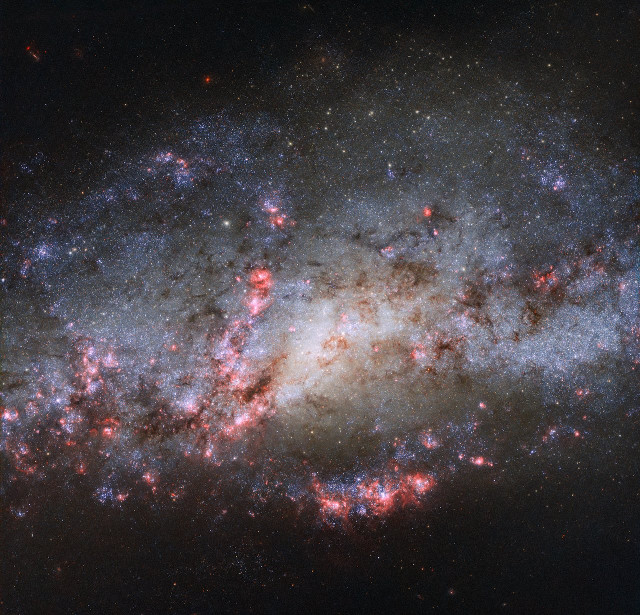
An image of the galaxy NGC 4490 captured by the Hubble Space Telescope shows in detail its distorted shape. That’s the result of a clash with the smaller galaxy NGC 4485, which millions of years ago went through its bigger neighbor. Probably this is just the beginning of the merger between the two galaxies but for now this clash has created among other things the conditions for the formation of new stars within NGC 4490.
What used to be a spiral galaxy is still classified as a barred spiral galaxy but its shape changed so much that it’s dubbed the Cocoon Galaxy. The Atlas of the Peculiar Galaxies features the pair NGC 4490 and NGC 4485 as ARP 269, distant approximately 23 million light years from Earth.
These two galaxies’ history has long been linked by the gravity force that led them to the first collision and probably in the future will cause their merger. Its shape distortion is the most obvious consequence of the collision between the galaxies NGC 4490 and NGC 4485, but astronomers also observed the conditions for new star formation.
Galaxies, though they can contain even many billions of stars, are composed mainly of empty space, so it’s difficult to see clashes between stars. Instead, it may happen that some star or star cluster of a galaxy passes through or at least in the vicinity of a cloud of gas and dust of the other galaxy. In that case, the consequence is that it causes with its gravity a shock that makes the gas coalesce in some areas triggering the formation of new stars.
The pink areas in the image are made up of ionized hydrogen contained in clouds that light up when irradiated by the ultraviolet light of young hot stars nearby. You can see that there are several areas of that type in the galaxy NGC 4490 and for this reason it was been classified as a starburst galaxy, which is precisely the category of galaxies where star formation is particularly high.
Star formation is also present in the bridge between the galaxies NGC 4490 and NGC 4485 that extends for about 24,000 light years, the distance between the two galaxies existing from our point of view. However, among the many stars born there are at least some that are very massive that consume their gas very quickly, so a number of supernovas were detected in the NGC 4490 galaxy in recent decades.
The evolution of the galaxies NGC 4490 and NGC 4485 is extremely slow from the human point of view and it may take many millions of years before they merge achieving a new stability in a single galaxy. However, this is an interesting subject of study because it shows one of the phases of that process with consequences that are already remarkable.


Permalink
Permalink